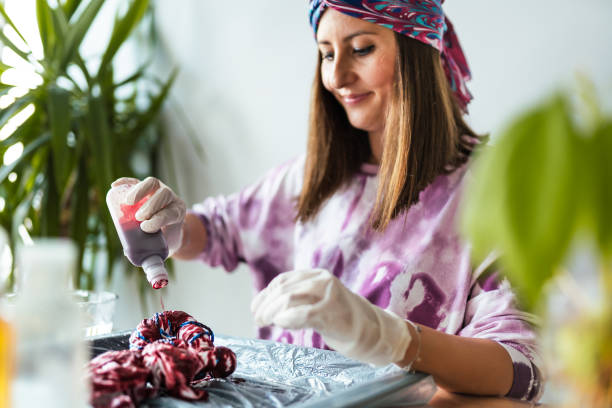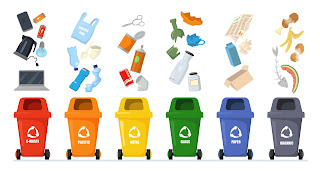Upcycling Clothes: Transforming Fashion with Creativity and Sustainability
In a world where fast fashion trends come and go at the speed of light, upcycling clothes offers a refreshing and sustainable way to revamp your wardrobe. Upcycling clothes is the process of repurposing and transforming old or discarded clothing items into new and improved pieces, is gaining popularity not just as a creative outlet but also as a powerful tool to combat the environmental impact of the fashion industry. Let's dive into the world of upcycling and explore how this trend is shaping the future of fashion.
The Rise of Upcycling
As more people become aware of the harmful consequences of fast fashion, a growing movement towards conscious consumption and sustainable living is emerging. The fashion industry is notorious for its waste production, excessive use of resources, and exploitative labor practices. In response, upcycling has gained traction as a means to breathe new life into existing clothing items while reducing the demand for new ones.
Unleash Your Creativity
Upcycling is more than just a way to be environmentally responsible; it's an avenue for expressing your creativity. Old jeans can be transformed into trendy denim skirts, worn-out t-shirts can become fashionable crop tops, and oversized sweaters can be turned into cozy cardigans. The possibilities are endless, limited only by your imagination.
Steps to Get Started
Inventory and Selection: Begin by going through your closet to identify items that you no longer wear or that have seen better days. Look for pieces made of high-quality fabric that can be repurposed effectively.
Inspiration and Ideas: Before you begin cutting and sewing, gather inspiration from fashion magazines, social media, or DIY blogs. This will help you visualize how you want your upcycled piece to look.
Design and Planning: Sketch out your design and plan the alterations needed. Consider adding embellishments, patches, embroidery, or combining different fabrics for a unique touch.
Tools and Materials: Depending on your project, you might need basic sewing supplies like needles, thread, scissors, and a sewing machine. Don't forget to collect any additional materials like buttons, zippers, or lace that you might need.
Execution: Carefully follow your plan and start altering your clothing item. Take your time with each step to ensure a polished result.
Personalization: One of the most exciting aspects of upcycling is personalization. Make your piece truly yours by adding your own artistic touches.
Benefits of Upcycling
Environmental Impact: By reusing existing clothing items, you're contributing to reduced textile waste and the conservation of resources required for new clothing production.
Unique Style: Upcycled pieces are one-of-a-kind creations. You won't find anyone else wearing the exact same thing, allowing you to stand out with your unique style.
Cost-Effective: Upcycling is often more budget-friendly than buying new clothes. You can create high-quality pieces without the high price tag.
Skill Building: Whether you're a seasoned seamstress or a novice, upcycling offers an opportunity to improve your sewing and crafting skills.
Join The Upcycling Movement
If you're ready to embrace a sustainable and creative approach to fashion, upcycling clothes is an excellent place to start. This movement is about more than just making stylish garments; it's about redefining your relationship with clothing and contributing to a more sustainable world. So, grab those scissors, thread that needle, and let your imagination run wild as you embark on your upcycling journey!
As more people become aware of the harmful consequences of fast fashion, a growing movement towards conscious consumption and sustainable living is emerging. The fashion industry is notorious for its waste production, excessive use of resources, and exploitative labor practices. In response, upcycling has gained traction as a means to breathe new life into existing clothing items while reducing the demand for new ones.
Unleash Your Creativity
Upcycling is more than just a way to be environmentally responsible; it's an avenue for expressing your creativity. Old jeans can be transformed into trendy denim skirts, worn-out t-shirts can become fashionable crop tops, and oversized sweaters can be turned into cozy cardigans. The possibilities are endless, limited only by your imagination.
Steps to Get Started
Inventory and Selection: Begin by going through your closet to identify items that you no longer wear or that have seen better days. Look for pieces made of high-quality fabric that can be repurposed effectively.
Inspiration and Ideas: Before you begin cutting and sewing, gather inspiration from fashion magazines, social media, or DIY blogs. This will help you visualize how you want your upcycled piece to look.
Design and Planning: Sketch out your design and plan the alterations needed. Consider adding embellishments, patches, embroidery, or combining different fabrics for a unique touch.
Tools and Materials: Depending on your project, you might need basic sewing supplies like needles, thread, scissors, and a sewing machine. Don't forget to collect any additional materials like buttons, zippers, or lace that you might need.
Execution: Carefully follow your plan and start altering your clothing item. Take your time with each step to ensure a polished result.
Personalization: One of the most exciting aspects of upcycling is personalization. Make your piece truly yours by adding your own artistic touches.
Benefits of Upcycling
Environmental Impact: By reusing existing clothing items, you're contributing to reduced textile waste and the conservation of resources required for new clothing production.
Unique Style: Upcycled pieces are one-of-a-kind creations. You won't find anyone else wearing the exact same thing, allowing you to stand out with your unique style.
Cost-Effective: Upcycling is often more budget-friendly than buying new clothes. You can create high-quality pieces without the high price tag.
Skill Building: Whether you're a seasoned seamstress or a novice, upcycling offers an opportunity to improve your sewing and crafting skills.
Join The Upcycling Movement
If you're ready to embrace a sustainable and creative approach to fashion, upcycling clothes is an excellent place to start. This movement is about more than just making stylish garments; it's about redefining your relationship with clothing and contributing to a more sustainable world. So, grab those scissors, thread that needle, and let your imagination run wild as you embark on your upcycling journey!



Comments
Post a Comment